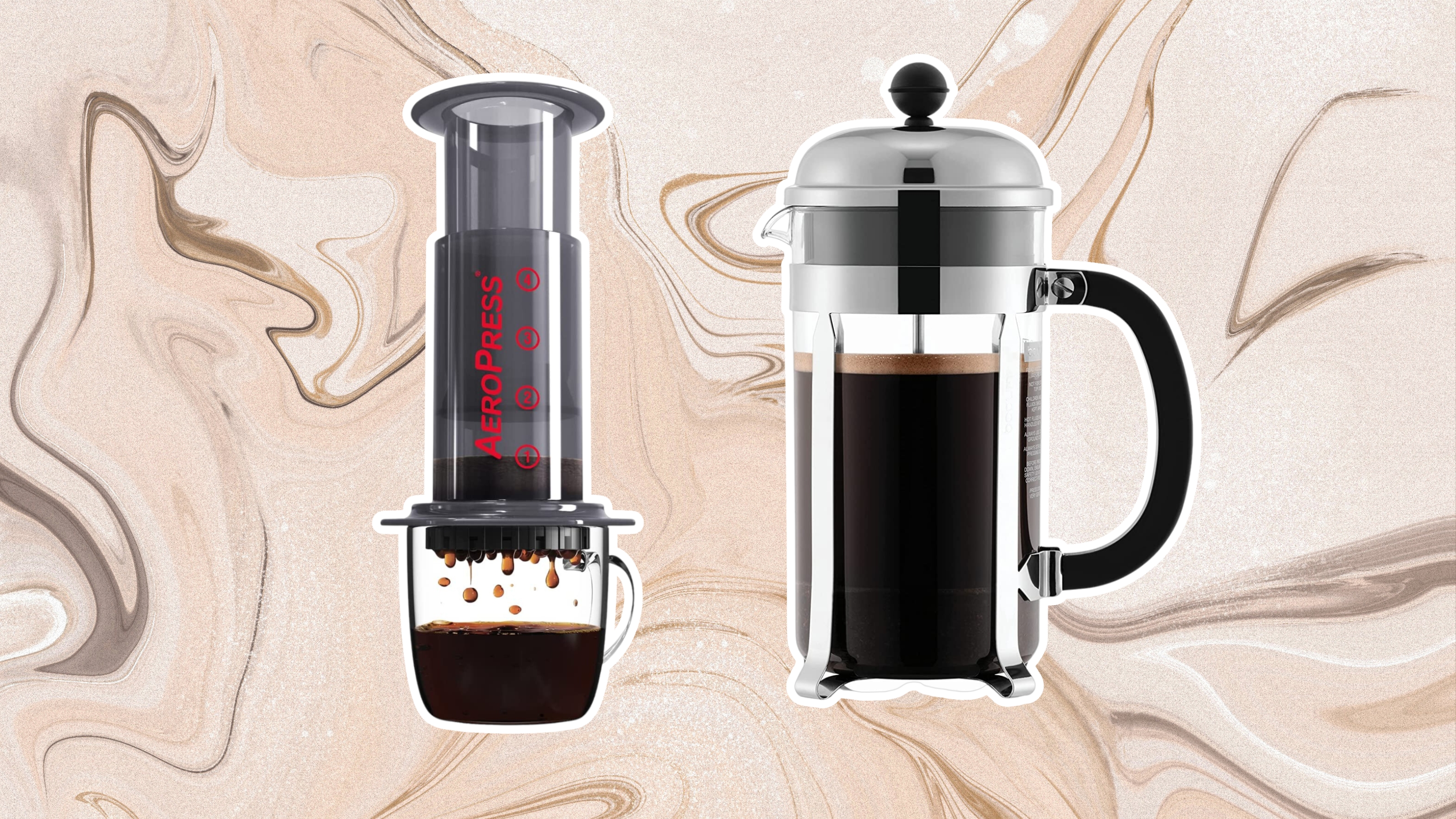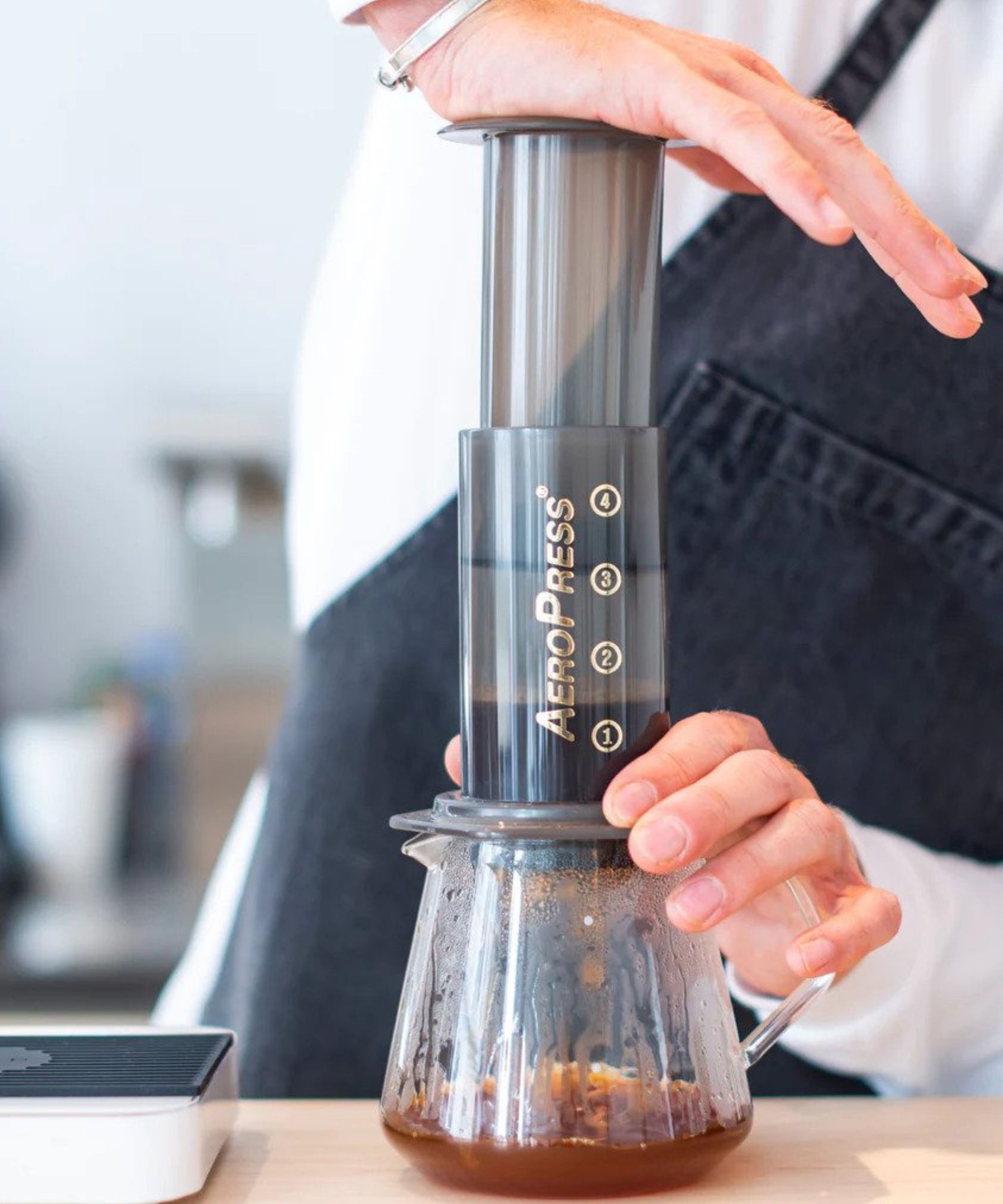Aeropress vs. French Press — what's the difference between these two coffee makers
American "Espresso"


Buckle up, because we're weighing up the Aeropress vs. French Press argument. When it comes to small coffee makers — these electricity-free devices make both make a good cup of joe. But there's more to just adding grounds and water, and applying pressure.
As your Real Homes shopping rep, I'm here to help you make coffee without a coffee maker. Usually, my remit is to review the best coffee machines (you know, the small kitchen appliances with a power outlet). But, if you enjoy coffee on the go, having a wireless source without going to Starbucks is going to save you spending money.
Portability, and manual brewing process aside, I'll look at which one is easier to clean ('cause wet coffee grounds set off my sensory issues) and explain which one makes a better cup of java. Most of us enjoy the caffeinated benefits of coffee too, so I'll see which one brews the speediest and strongest cup to get you out of the door.
What is a French press, and how does it work?
A French press (aka cafetiere) is a heat-resistant borosilicate glass carafe (typically with a metal outer frame. By steeping coarse coffee grounds and hot water, you can create an aromatic end-product. To immerse said grounds, you'll need to lower the plunger which will enable the coffee-making process.
You'll want to use approximately one tablespoon of coffee for every 4 oz. of water when making coffee using this method. Though the above TikTok vid uses 16 grams for every 250ml. It all depends on your personal preference. Got a water filter? Even better, you'll get a fresher-tasting brew. Using an electric kettle to boil your water beforehand is the quickest way to prepare your hot drink.
It'll take about four minutes to make the perfect drink. Our eight-step guide on how to use a French press will take you through absolutely everything including the ideal water temperature, and how to preheat your jug and cups for a drink that stays warmer for longer. PSA: You *don't* need to violently agitate the grounds like a toilet plunger!
Cleaning a French press couldn't be easier! I have one and have put together a 6-step guide on the quickest way to dispose of spent grounds (or use coffee for cleaning your kitchen). My tutorial also shows you how to properly break down the coffee oils (which could turn rancid) if you don't clean your coffee maker.
Get small space home decor ideas, celeb inspiration, DIY tips and more, straight to your inbox!
What is an Aeropress, and how does it work?

You could say that an AeroPress (available on Amazon) is a type of cafetiere! Except there are some small differences. Where a French Press uses coarse and even grounds — the AeroPress prefers a finer product. While this might sound a bit fussy at first — the smaller surface area actually imparts more flavor into your hot water.
Take it from someone who loved chemistry class at school. Finer filter + smaller grounds = less time to brew. A French press needs a li'l longer and you run the risk of bitter-tasting coffee if the grounds are sat for too long.
If you don't own a good coffee grinder (you can pick up an Amazon Basics one for under $18), you can use a high-performing blender (like a Nutribullet or Beast B10 blender).
Don't have a blender? The experts at Aeropress say that you can make pour-over style coffee using medium grounds. You'll just have to play about with timings.
Our verdict — which device wins, and why?
Out of the criteria below, the AeroPress takes the coffee crown for four our of six categories. Yes, it's made out of plastic, but it is better than the single-use cups we drink out of when visiting our local coffeehouse, so we'll let it slide.
- Best taste: AeroPress, because of the finer surface area
- Speed / time to make: AeroPress (two minutes). Plus finer grounds = quicker extraction
- Easiest clean-up? AeroPress (but both coffee makers can be cleaned with vinegar)
- Cost-per-use: French press (in most cases, dependent on model)
- Portability factor: AeroPress (the glassless-design is rucksack and work bag friendly)
- Style: French Presses are far prettier than the current Aeropress designs, but we'll keep our eyes peeled for what the brand has in store.
AeroPress devices use filters that result in less mess than a French Press. Simply get rid of those soggy papers and 90% of the work has been taken care of. The AeroPress can be used in two ways (inverted and you've practically got a French Press). Grab some ice, and it's possible to use it as an iced coffee maker too.
As well as its main coffee press, Aeropress also sells coffee accessories including the flow control filter cap which allows coffee connoisseurs maximum control over their brew. What this means is that it can emulate a top-of-the-range espresso maker (yep, even the crema), and even the extraction rate of the best filter coffee makers.

Hi, I'm the former acting head ecommerce editor at Real Homes. Prior to working for the Future plc family, I've worked on a number of consumer events including the Ideal Home Show, Grand Designs Live, and Good Homes Magazine. With a first class degree from Keele University, and a plethora of experience in digital marketing, editorial, and social media, I have an eye for what should be in your shopping basket and have gone through the internal customer advisor accreditation process.